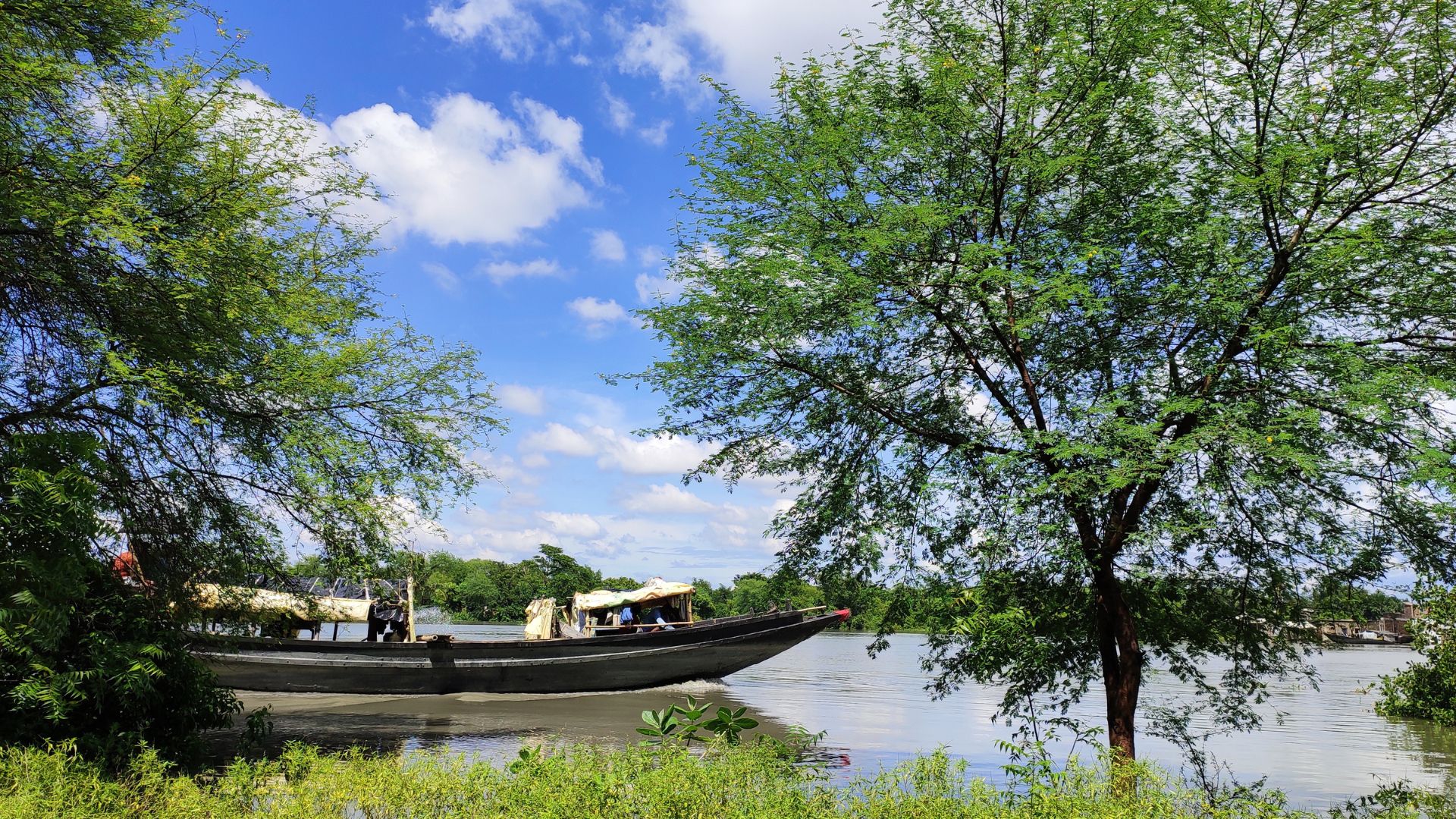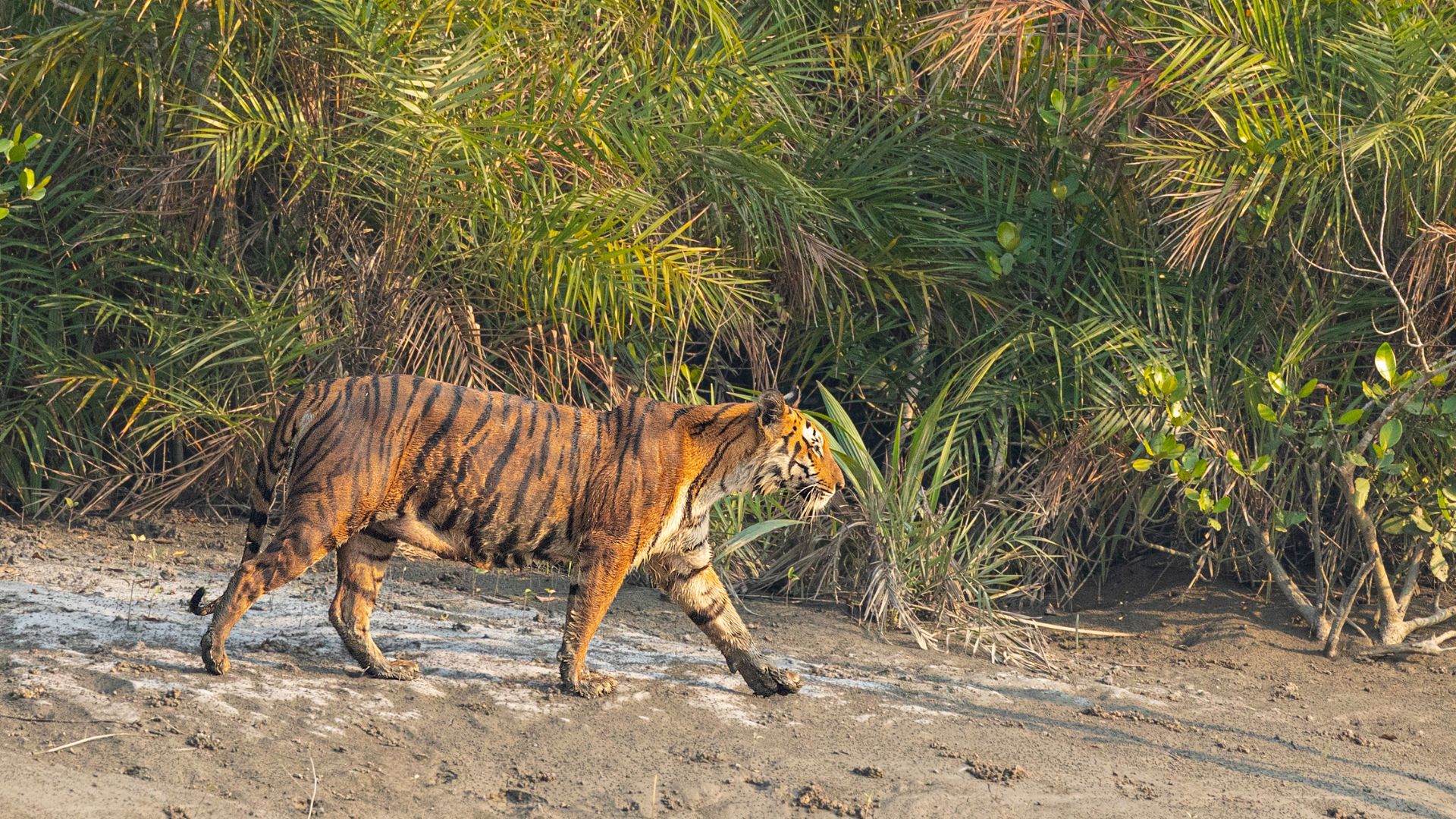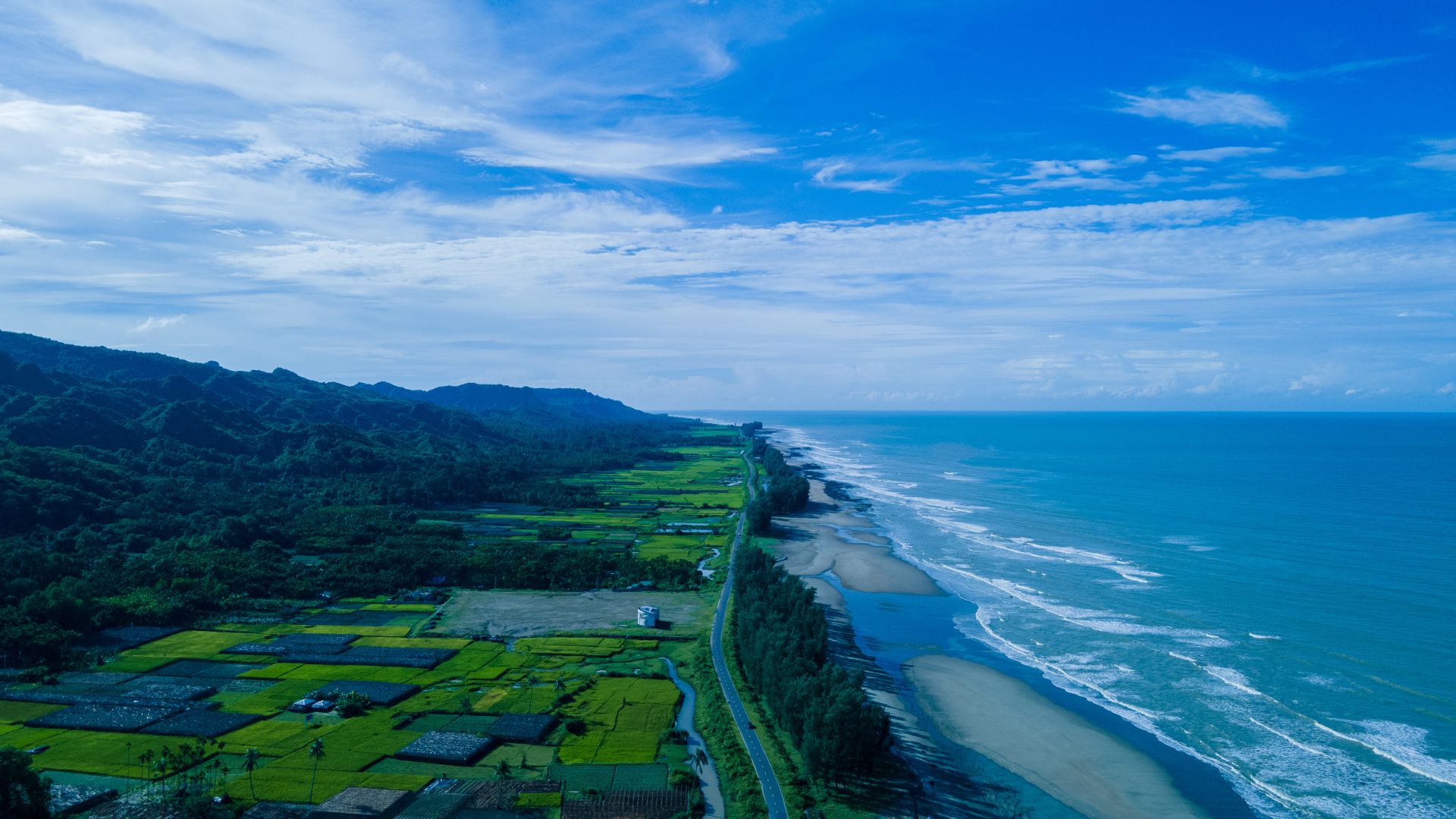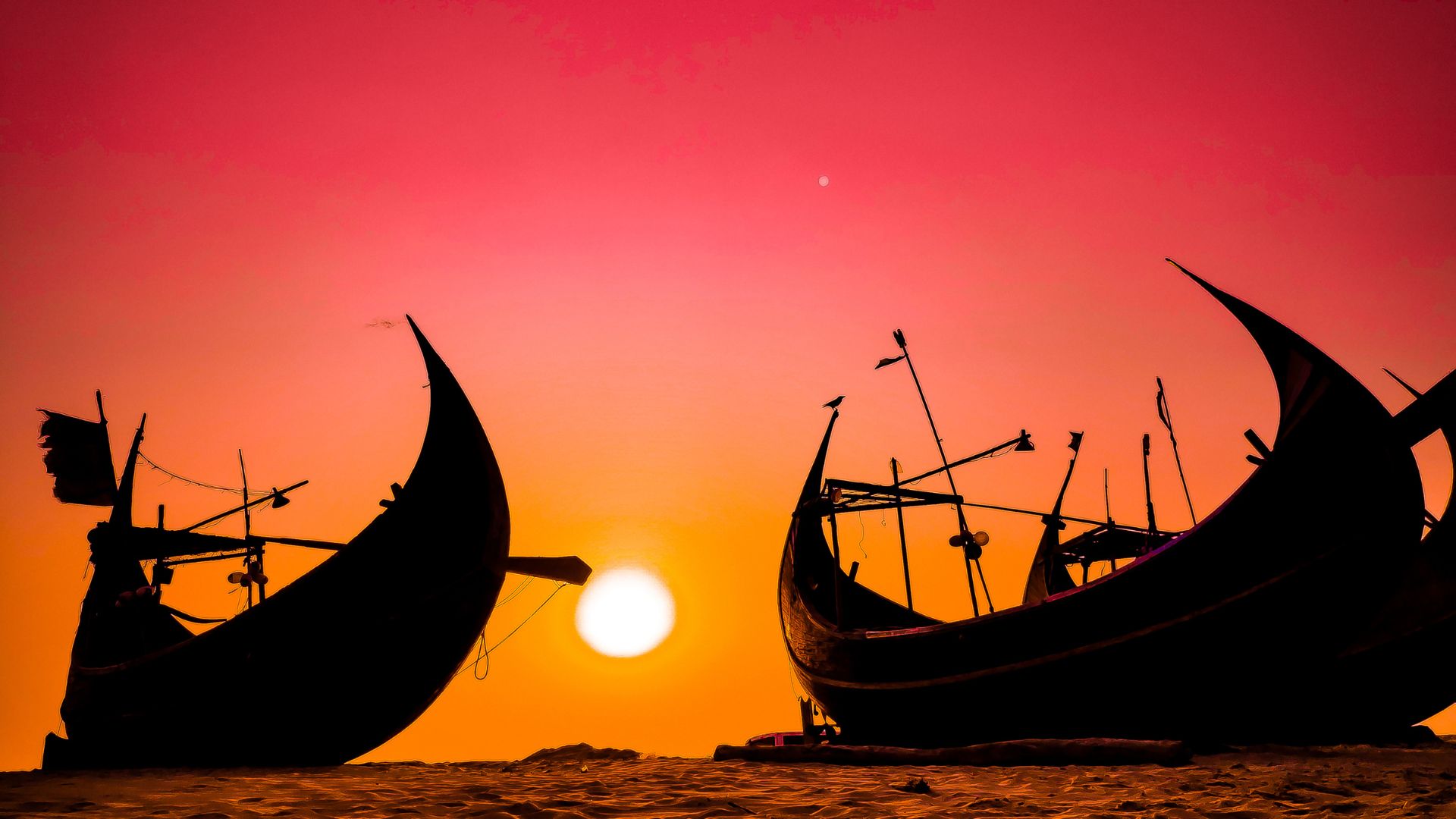Let me start with brutal honesty: Most people visit the Sundarbans expecting to see a Royal Bengal Tiger. They don't. And they're disappointed.
I've done three Sundarbans tours. Total days spent in the forest: 7. Tiger sightings: Zero. Direct ones, anyway. But here's what I did see: fresh pugmarks on muddy riverbanks, a tree branch still shaking where a tiger had just crossed, distant roars at dawn, and once – just once – a fleeting orange shadow disappearing into the dense mangroves.
Did I leave disappointed? Not even slightly. Because the Sundarbans isn't just about tigers. It's about cruising through narrow creeks surrounded by ancient mangrove forests. It's about spotted deer grazing on riverbanks. It's about crocodiles basking in the sun. It's about watching dolphins playfully surface. It's about being in a UNESCO World Heritage Site that's genuinely wild and untamed.
But it's also expensive. It requires planning. You'll be uncomfortable at times. And you need to know what you're signing up for. This guide will tell you everything – the good, the challenging, and the real costs involved.
Understanding the Sundarbans: What You're Actually Visiting
The Sundarbans is the world's largest mangrove forest – 10,000 square kilometers spanning Bangladesh and India. The Bangladesh side (which this guide covers) is about 6,000 sq km of tidal waterways, mudflats, and dense forest.
This isn't a place you can just visit casually. You can't drive there, walk around, and leave. All visits are by boat. You stay on the boat. You eat on the boat. You sleep on the boat (or on designated islands with basic accommodation). The forest is protected – you can't just wander in.
Key facts to set expectations:
- It's a tidal mangrove forest. High tide and low tide dramatically change the landscape.
- Home to an estimated 100-150 Royal Bengal Tigers. In 10,000 sq km. Do the math.
- Also home to spotted deer, wild boars, crocodiles, various bird species, and Irrawaddy dolphins.
- No mobile network inside the forest. You're genuinely disconnected.
- Tours typically last 2-4 days. Anything shorter feels rushed.
Tour Package Costs: Complete Breakdown
This is what most people want to know first. Costs vary significantly based on boat type, tour length, and operator. Here's the real breakdown:
Budget Tours (8,000-12,000 BDT per person for 3D/2N)
What you get:
- Basic boat with simple cabins (shared bathroom)
- All meals included (Bengali food, basic but filling)
- Forest permits and entry fees
- Armed guard (mandatory for tiger safety)
- Basic guide
- Visits to 2-3 key spots
What you don't get:
- AC cabins (only fans)
- Private bathrooms
- Varied menu (expect similar meals daily)
- Comfortable bedding (basic foam mattresses)
My take: If you're on a tight budget and can handle basic facilities, these work. The forest experience is the same regardless of boat luxury. But be mentally prepared for basic comfort.
Mid-Range Tours (15,000-25,000 BDT per person for 3D/2N)
What upgrades you get:
- Better boat with AC cabins
- Private attached bathrooms (hot water available)
- More varied meals, better quality
- Experienced guide with better wildlife knowledge
- Visits to 4-5 spots including less touristy areas
- Better safety equipment
- Smaller group sizes
My take: This is the sweet spot. Comfortable enough to enjoy, not so expensive that you're stressed about cost. This is what I'd recommend for most people.
Luxury Tours (35,000-60,000 BDT per person for 3D/2N)
Premium features:
- Well-maintained modern boat with fully AC cabins
- Quality bedding, proper bathrooms
- Excellent meals (variety, quality ingredients)
- Expert naturalist guides
- Better cameras/binoculars provided
- More comprehensive forest coverage
- Smaller groups (8-12 people max)
My take: Worth it if: you're doing this once-in-a-lifetime, you value comfort highly, or you're bringing elderly parents/young kids who need better facilities.
What's Included vs What Costs Extra
Typically included in packages:
- Boat accommodation
- All meals during tour (breakfast, lunch, dinner, tea/snacks)
- Forest entry permits
- Armed guard fees
- Guide fees
- Fuel for the boat
Usually NOT included (extra costs):
- Transport to/from Khulna or Mongla (tour starting point)
- Personal expenses (water, soft drinks, snacks)
- Tips for crew and guide (expected, budget 500-1000 BDT)
- Any shopping at stops
Best Time to Visit: Month-by-Month Guide
October to March: Peak Season (Best Time)
This is when you should visit. Cool weather (15-25°C), less rain, calmer waters, better wildlife visibility.
November to February is absolute peak:
- Perfect weather – not too hot, not too cold
- Migratory birds present (massive bonus for bird watchers)
- Animals more active and visible
- Comfortable sleeping on boats
Downside: Higher prices, more tourists, need to book 3-4 weeks in advance.
October & March (shoulder months):
- Slightly warmer but still good
- Fewer tourists, better prices (15-20% cheaper)
- Easier booking
April to June: Hot Season (Doable but Challenging)
Temperature: 30-38°C. Humid. Uncomfortable.
Pros:
- Much cheaper tours (30-40% discount)
- Very few tourists
- Animals come to water sources more frequently
Cons:
- Brutal heat
- High humidity makes it exhausting
- Mosquitoes abundant
- Sleeping on boats uncomfortable without good AC
My verdict: Only if you're on a very tight budget and can handle heat. Otherwise, wait for cooler months.
July to September: Monsoon (Avoid)
Don't go during monsoon. Heavy rains, rough waters, limited visibility, many operators don't run tours, and it's genuinely unsafe in rough weather.
What to Expect: A Day-by-Day Breakdown
Based on a typical 3D/2N tour:
Day 1: Journey & Initial Exploration
Morning: Depart from Khulna or Mongla by boat (usually 8-9 AM). First few hours are transit through wider rivers. Scenery: fishing villages, river traffic, gradual transition to wilder areas.
Lunch: First meal on boat. Usually rice, fish curry, vegetables. Simple but fresh.
Afternoon: Enter forest zones. First wildlife spotting attempts. You'll see spotted deer (almost guaranteed), various birds, possibly crocodiles basking.
Evening: Anchor near a forest watch tower or island. Dinner on boat. Guide gives briefing about next day. Early sleep (there's not much else to do).
Day 2: Deep Forest Exploration
Early morning (5:30 AM): Wake-up call. This is prime wildlife time. Tea and biscuits, then morning cruise through narrow creeks.
7-8 AM: Visit to watch tower. Climb up, scan forest. This is your best chance for tiger spotting (though still unlikely). You WILL see deer, birds, maybe wild boars.
Breakfast: Back on boat. Proper breakfast – usually eggs, bread, vegetables.
Mid-morning: Cruise deeper into forest. Stops at various points. Guide explains mangrove ecology, points out wildlife.
Lunch & rest: Midday heat is intense. Eat, rest in cabin.
Late afternoon: Another exploration session. Visit different creek or island.
Evening: Anchor for night. Dinner. If lucky, hear tiger roars in distance (happened to me on second tour).
Day 3: Return Journey
Early morning: Final wildlife viewing session.
Breakfast: Last meal on boat.
Mid-morning onwards: Begin journey back. Stops at any interesting sightings along the way.
Afternoon: Reach Khulna/Mongla. Tour ends.
Wildlife You'll Actually See (Realistic Expectations)
Almost Guaranteed:
- Spotted Deer: Abundant. You'll see dozens.
- Birds: Kingfishers, eagles, herons, storks. Hundreds of species.
- Monkeys: Rhesus macaques are common near watch towers.
Very Likely:
- Crocodiles: Estuarine crocodiles basking on riverbanks. Scary but amazing.
- Wild Boars: Often seen foraging.
- Various reptiles: Monitor lizards, snakes (from safe distance).
Possible:
- Dolphins: Irrawaddy dolphins sometimes surface. Magical when it happens.
- Fishing Cats: Small wild cats. Rare sightings.
- Otters: Shy but present.
Unlikely but Possible:
- Royal Bengal Tiger: Let's be real. 5-10% of tours get actual sightings. You'll likely see pugmarks, maybe hear roars, but direct sighting? Rare. This isn't a zoo.
Important mindset shift: Go for the ecosystem, not just the tiger. If you see a tiger, consider it an incredible bonus, not a guaranteed feature.
Booking Your Tour: How to Do It Right
Through Tour Operators (Recommended)
Advantages:
- Everything arranged (permits, boat, guide, food)
- No hassle with paperwork
- Safer (verified boats and guides)
How to book:
- Research operators online
- Check reviews (Google, Facebook, travel forums)
- Contact 3-4 operators, compare packages
- Ask specific questions: boat type, group size, exact itinerary
- Book 2-4 weeks in advance (longer for peak season)
- Get written confirmation with exact costs
DIY Booking (Cheaper but Complicated)
Possible but not recommended unless you're experienced and Bengali-speaking. Requires:
- Arranging your own boat
- Getting forest permits (bureaucratic process)
- Hiring armed guard separately
- Arranging food and supplies
Savings: Maybe 20-30%. Headache: Significant. Risk: Higher.
Essential Packing List
Absolutely Essential:
- Mosquito repellent: Cannot overstate this. Mosquitoes are relentless.
- Sunscreen (SPF 50+): Reflection from water intensifies sun.
- Binoculars: For wildlife spotting. Tour might provide, but bring your own if possible.
- Medications: Any personal meds, plus motion sickness pills, basic painkillers.
- Power bank: No electricity on basic boats.
- Flashlight/torch: Nights are dark.
- Cash: No ATMs in the forest.
Highly Recommended:
- Good camera: You'll regret not having one.
- Light jacket: Mornings and evenings can be cool.
- Hat and sunglasses
- Wet wipes/hand sanitizer
- Plastic bags: Keep electronics dry
- Comfortable shoes: Easy to slip on/off (you'll board dinghies)
Clothing:
- Light, breathable clothes
- Long sleeves for mosquito protection
- 2-3 sets (you'll sweat)
- One warmer layer for evenings
Safety Considerations
Tigers: All tours have armed guards. Stay in boat, don't wander alone, follow guide's instructions. Tiger attacks on tourists are extremely rare when rules are followed.
Crocodiles: Don't swim, don't trail hands in water from boat. They're present and dangerous.
Mosquitoes: Use repellent religiously. Malaria risk is low but dengue possible. Consider doctor consultation about prophylaxis.
Heat/Sun: Stay hydrated. Wear sunscreen. Seek shade during midday.
Boats: Use verified tour operators. Check boat has life jackets, first aid kit, communication equipment.
Getting There: Transport to Sundarbans
To Khulna (Main Starting Point)
From Dhaka by bus: 6-8 hours, 600-900 BDT (non-AC to AC)
From Dhaka by train: ~10 hours, 400-800 BDT depending on class
From Dhaka by air: No direct flights currently
To Mongla (Alternative Starting Point)
From Khulna: 1.5 hours by road (150-200 BDT by bus)
Many tours start from Mongla as it's closer to forest entry points.
Final Verdict: Is Sundarbans Worth It?
Here's my honest answer: If you're expecting an easy, comfortable wildlife safari with guaranteed tiger sightings – no, it's not for you.
But if you want:
- A genuine wilderness experience
- To explore a UNESCO World Heritage Site
- To cruise through the world's largest mangrove forest
- To see diverse wildlife in natural habitat
- To completely disconnect from modern life for a few days
- A unique adventure that's genuinely wild
Then yes. Absolutely yes. It's one of the most unique experiences in Bangladesh.
The Sundarbans isn't easy. It's hot, it's buggy, you'll be on a boat for days, you probably won't see a tiger. But you'll see something even rarer these days – a forest that's truly wild, not curated for tourists. Where nature, not humans, is in control.
And that's worth every taka.
For more information about the Sundarbans region, visit our Khulna district page. For more Bangladesh travel guides, check our travel blog.
Official information: Bangladesh Tourism Board








